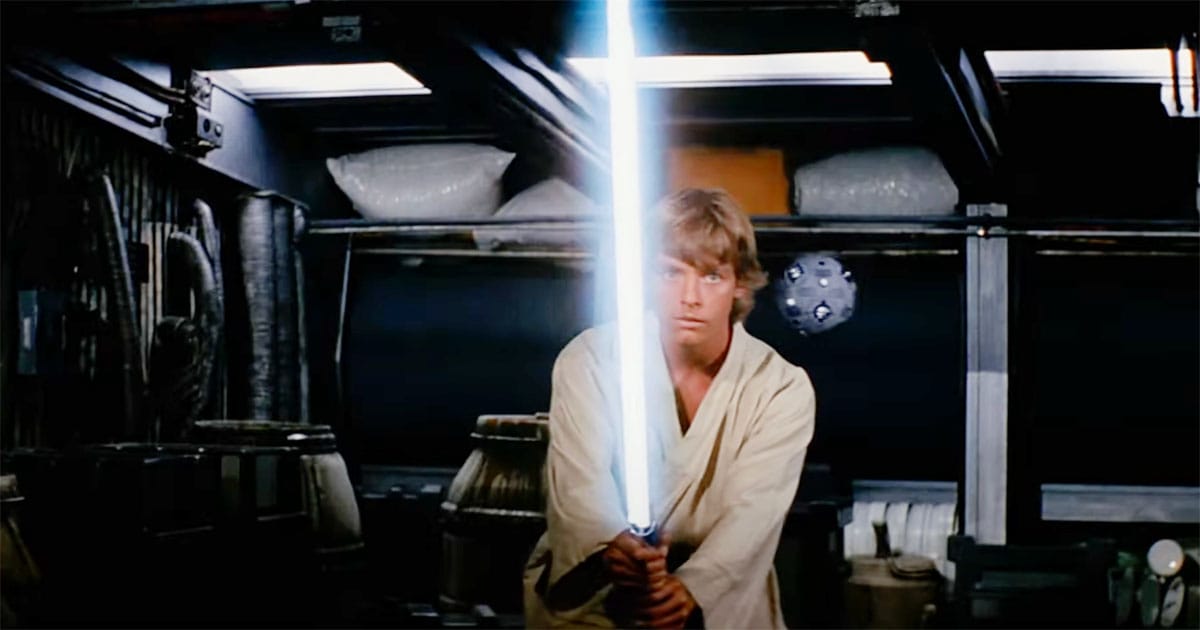The Glow That Started It All
Discover how the original "Star Wars" lightsabers glowed using Scotchlite tape, motors, and movie magic before CGI took over.

How Reflective Tape Helped Ignite the Lightsaber
In 1977, when audiences first saw a glowing blade of light cut through the smoky corridors of a Rebel ship, they witnessed the birth of a legend. The lightsaber was elegant, mysterious, and unmistakably dangerous. It wasn't a digital creation. It was a practical effect built with tape, motors, and ingenuity.
Before computer-generated imagery became standard, the team behind "Star Wars" had to get creative. One of their cleverest tricks involved wrapping fiberglass or wooden rods in Scotchlite retroreflector, the same material used on highway signs. When struck with intense light and spun by a motor in the hilt, the rod appeared to glow. This practical effect gave the lightsaber a vivid on-camera presence that helped sell the illusion of futuristic swordplay.
The prop team relied on real physics and careful craftsmanship. The reflective tape sent light straight back to the camera lens, producing a dazzling effect without post-production. When done right, it looked magical. When conditions weren't perfect, it fell apart.
Making the Glow Work
The glow wasn't just for show. Actors could see the blade and time their movements during duels, giving the action a grounded precision.
Cinematographers could frame shots around the visible light. But the method had limits—blades could break, light angles had to be exact, and the glow sometimes vanished if a move pushed the blade outside the light cone.

To fix that, the team turned to rotoscoping. Frame by frame, artists traced the glowing rods and added color effects. The labor was slow but delivered consistent, vivid results. Rotoscoping allowed for enhancements like color variance between Jedi and Sith and added that signature flicker and aura.
As the production progressed, it became clear that relying on reflective rods was too risky. The post-production solution simply worked better. From "The Empire Strikes Back" onward, the glowing rod was gone, and in its place was a standard dueling stick enhanced entirely after filming.
From Tape to Post-production
By the time the second film in the trilogy hit theaters, the lightsaber had evolved. Post-production offered more control, more polish, and fewer headaches. But something was lost too. That first film's blades flicker and pulse with an analog charm, like artifacts from a world built on wires and willpower.
The reflective tape gave the lightsaber a texture that matched its myth. It was less refined, but more alive. The blend of old-world craft and futuristic design made the weapon feel real. It gave the fantasy weight and presence that pure digital tools sometimes lack.
Legacy of the Light
Today's lightsabers are rendered with digital precision and can do things the original team never imagined. But their origins lie in hardware-store parts and Scotchlite tape. That glow began with a spinning rod, a spotlight, and the instinct of filmmakers who knew how to make the impossible look real.
For classic science fiction fans, the lightsaber isn't just a symbol of Jedi virtue. It's a monument to hands-on imagination. Before CGI, there were craftsmen. And they made the Force visible—with nothing more than tape, motors, and light.

